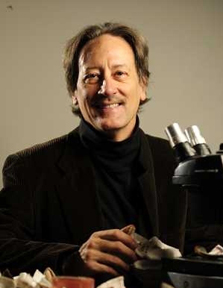|
Distinguished Professor of Anthropology, Vanderbilt College
TAC Festival 2013 Keynote Address: “Entangled Knowledge and the Quest for New Models on the Peopling of the Americas” |
||
|
Dr. Tom Dillehay received his Ph.D. from the University of Texas at Austin in 1976 based on research on large Inca sites in Peru and then taught at the Southern University of Chile in Valdivia, Chile. In that same year, 1976, the now-famous Monte Verde archaeological site was discovered about 120 miles south of Valdivia. Along with colleague Mario Pino, Dillehay began excavating the Monte Verde site in 1978 and recovered evidence of its extreme antiquity as well as its high degree of organic preservation. Early reports of pre-Clovis (meaning earlier than about 13,500 years ago) occupation at Monte Verde sparked widespread scepticism among the archaeological community, which largely held to the model of Clovis Culture in North America as the first manifestation of humanity in the Western Hemisphere. Nearly twenty years after excavations at Monte Verde began, in 1997, a blue-ribbon panel of archaeologists inspected the site and concluded that Dillehay’s analyses and interpretations were correct, accepting an age of 14,800 years for the site. This review led to a distinct paradigm shift in the professional community, which now favors the model of early (15,000 years ago or earlier) coastal migration from Asia as the means by which the first humans occupied North and South America.
Dr. Dillehay is Distinguished Professor in the Department of Anthropology at Vanderbilt College, specializing in archaeology, migration, political and economic change, and South America. Professor Dillehay has carried out numerous archaeological and anthropological projects in Peru, Chile, Argentina, and other South American countries and in the United States. He was awarded an Honorary Doctorate at the Southern University of Chile.
Dr. Dillehay has published 15 books and over 200 refereed journal articles. He has been a Visiting Professor at universities around the world, including the University of Chile; the National University of San Marcos, Lima, Peru; the University of Sao Paulo, Brazil; the National Autonomous University of Mexico; Cambridge University; the University of Tokyo; and the University of Chicago.
He currently co-directs with the University of Chicago an interdisciplinary project focused on long-term human and environmental interaction on the north coast of Peru at Huaca Prieta, which displays early monumental architecture as well as very early dates for coastal adaptation. He also directs a project on the political identity of Araucanian indigenous peoples in Chile and Argentina that is sponsored by the Guggenheim Foundation and the National Science Foundation. Professor Dillehay has received numerous international and national awards for his research, books and teaching and is a member of the American Academy of Arts and Sciences.
|
||

